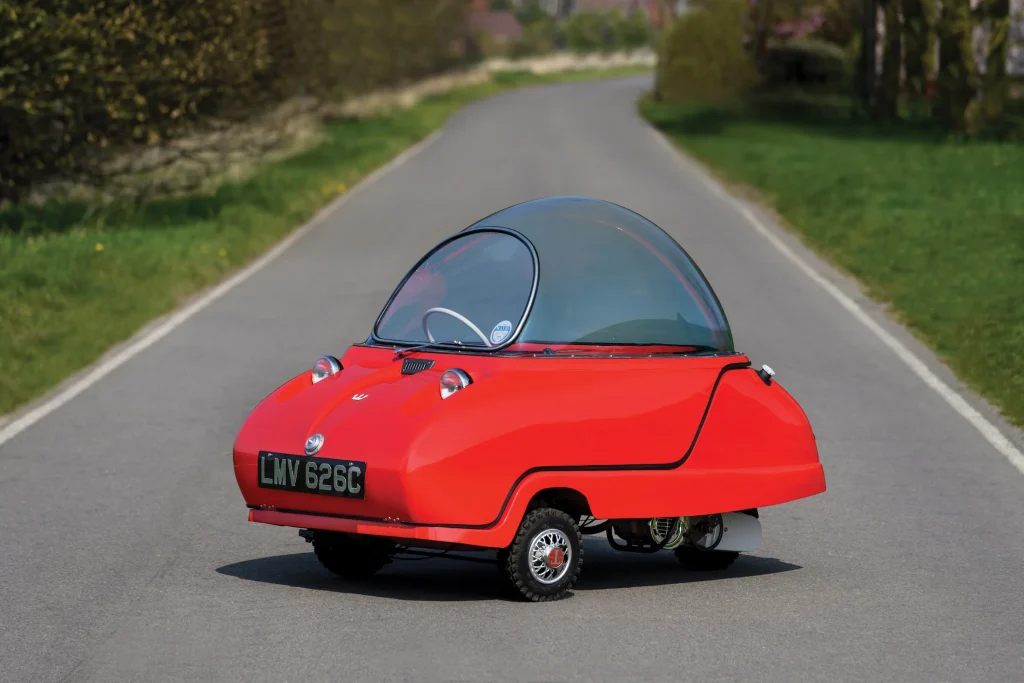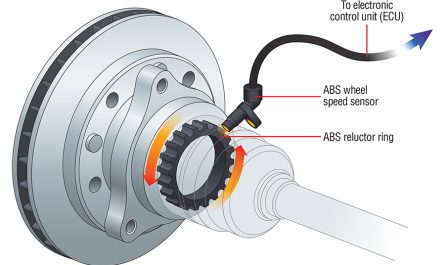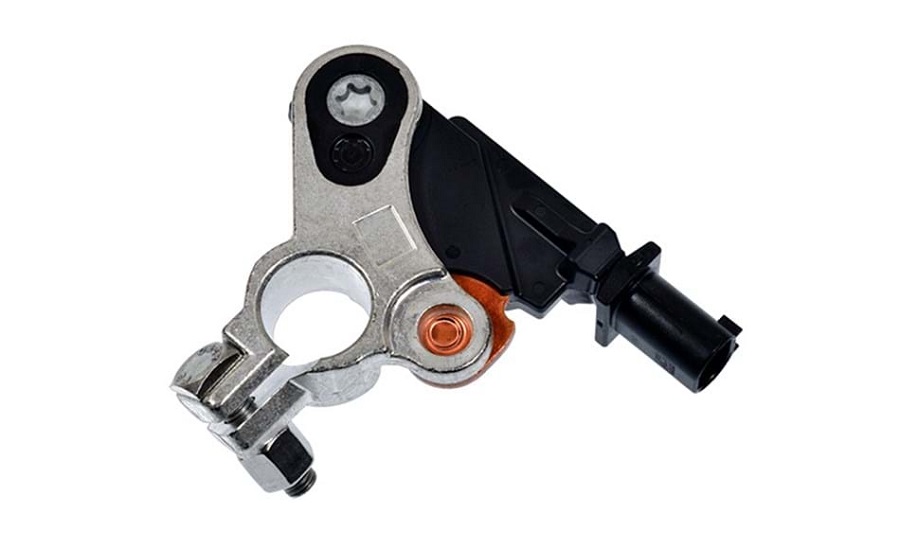
When it comes to automobiles, we often think of speed, power, and luxury. But what if I told you that there is a car that goes against the grain? One that is not about horsepower or sleek designs, but instead about compactness and functionality. Welcome to the world of the Peel Trident—the smallest two-seater car in the world. Despite its small size, the Peel Trident has a fascinating history and has captured the imagination of car enthusiasts globally. In this blog post, we will explore everything there is to know about the Peel Trident, from its origins to its modern-day appeal.Now, let’s explore the Peel Trident in detail.
The Origins of the Peel Trident
The Peel Trident is the brainchild of Peel Engineering Company, a small but innovative manufacturer based on the Isle of Man, a small island situated between England and Ireland. Peel Engineering first gained attention in the 1960s for its development of incredibly small, lightweight vehicles. The company initially specialized in making fiberglass boats but soon decided to venture into the automobile industry.
The Peel Trident was introduced in 1965, following the release of the even smaller Peel P50. The P50, widely known as the smallest car ever produced, set the stage for the Peel Trident, which offered a two-seater configuration instead of the P50’s single seat.
The Trident was marketed as a “microcar,” a term that essentially means a car built for city use, with a focus on practicality over performance. Its main selling points were its minuscule size, ease of parking, and fuel efficiency. Despite its quirky design, the Trident was seen as a practical solution for the crowded streets of European cities in the 1960s.
Design and Features
The design of the Peel Trident is unlike any other car you’ve ever seen. It is extremely small, with a length of just 72 inches and a width of 42 inches. The car’s body is made from lightweight fiberglass, which makes it surprisingly durable despite its size. However, its most iconic feature is its dome-like bubble roof made of Perspex (a form of acrylic glass). This unique feature gives the car a futuristic look, reminiscent of a spacecraft.
Inside the Peel Trident, you’ll find just enough space for two passengers. The car lacks many modern amenities like air conditioning or an infotainment system, but that’s not what this car is about. It’s designed to be a minimalist vehicle for short commutes, and it fulfills that role beautifully. The seating arrangement is cramped by modern standards, but this is one of the sacrifices made to keep the vehicle as small as possible.
The Peel Trident runs on a 49cc engine, which is tiny compared to today’s standards. However, the car only weighs around 198 lbs (90 kg), meaning that it doesn’t need much power to get moving. It can reach a top speed of about 28 mph (45 km/h), which is adequate for urban environments. Although it’s not built for speed, it’s perfect for city driving.
Price
The Peel Trident is a rare collector’s item, and its price varies significantly based on the condition and whether it’s an original or a modern replica.
- Original Peel Trident (1960s): Prices for original models can range from $70,000 to $120,000 or more, depending on rarity and restoration.
- Modern Replica (Electric Version): Peel Engineering has revived the Peel Trident, with electric-powered replicas costing around $20,000 to $25,000.
These prices reflect the Peel Trident’s unique status as a classic microcar and its growing appeal among collectors.
How the Peel Trident Was Used
The Peel Trident was marketed primarily to city dwellers who needed a small, easy-to-park vehicle. At a time when city streets were becoming increasingly congested, the Trident offered a practical alternative to larger cars. Its compact size meant that it could be parked almost anywhere, and its fuel efficiency made it a cost-effective option for short commutes.
In many ways, the Peel Trident was ahead of its time. It predated the modern emphasis on environmental sustainability, but its small engine and lightweight body made it much more fuel-efficient than most vehicles on the road. It also offered a practical solution to urban congestion, which is a problem that cities continue to grapple with today.
While the Peel Trident was never produced in large numbers, it gained a cult following among car enthusiasts. It is now considered a collector’s item, with restored models fetching high prices at auctions.
The Legacy of the Peel Trident
The Peel Trident, along with the Peel P50, has become something of a cultural icon. Its quirky design and unique features have made it a favorite among car collectors and automotive enthusiasts. In recent years, the Trident has enjoyed something of a renaissance, as interest in microcars has surged.
One of the reasons for this renewed interest is the car’s appearance in various media. The Peel Trident has been featured on television shows like Top Gear, where its small size and unusual design made it an instant hit with viewers. It has also been showcased at various car shows and exhibitions, where it continues to capture the imagination of attendees.
The Peel Trident’s place in automotive history is cemented not by its performance, but by its unique design and cultural significance. It is a car that defies expectations and challenges our notions of what an automobile can be.
Peel Trident: A Collector’s Dream
Today, the Peel Trident is highly sought after by collectors. Because so few were produced, finding an original Trident can be a challenge. Those that do come up for sale are often sold at high prices, as collectors recognize the car’s historical significance.
For those who can’t find an original Trident, Peel Engineering has started producing replicas of the Trident and P50 in limited numbers. These replicas are almost identical to the original models, although they feature modern upgrades like electric powertrains. This allows a new generation of car enthusiasts to experience the charm of the Peel Trident while enjoying the benefits of modern technology.
Modern-Day Appeal and Electric Versions
In recent years, Peel Engineering has revived the production of both the Peel P50 and the Peel Trident, albeit in limited numbers. The modern versions come with electric engines, which makes them even more appealing for city driving in today’s eco-conscious world. These new electric versions maintain the classic design of the original models but add the convenience and sustainability of electric power.
The electric Peel Trident can reach speeds of up to 30 mph, making it slightly faster than its gasoline-powered predecessor. It also offers a range of about 50 miles on a single charge, which is more than enough for short city commutes. The compact size of the Trident remains one of its main selling points, as it allows drivers to park in tight spaces and navigate crowded streets with ease.
Why the Peel Trident Still Matters
In an era where cars are becoming bigger, faster, and more luxurious, the Peel Trident stands out as a reminder of a time when practicality was more important than performance. While it may not have the speed or power of modern cars, the Trident offers something that few other vehicles can match: a sense of whimsy and charm.
The Trident’s small size and minimalist design challenge our assumptions about what a car should be. It proves that bigger isn’t always better and that sometimes, simplicity is the key to success. As cities continue to struggle with traffic congestion and environmental concerns, the Peel Trident offers a glimpse into a future where small, efficient vehicles are the norm.
Final Thoughts
The Peel Trident is more than just a car—it’s a piece of automotive history. Its small size, unique design, and practical features have made it a beloved icon in the world of microcars. While it may not have the power or luxury of modern vehicles, the Trident offers something even more valuable: a sense of innovation and simplicity that is often missing in today’s automotive industry.
Whether you’re a car collector, a microcar enthusiast, or just someone who appreciates quirky design, the Peel Trident is a vehicle that deserves your attention. Its legacy continues to live on, thanks to a devoted fan base and modern replicas that keep the spirit of the original alive.
In a world where cars are getting bigger and more complex, the Peel Trident reminds us that sometimes, less is more.


